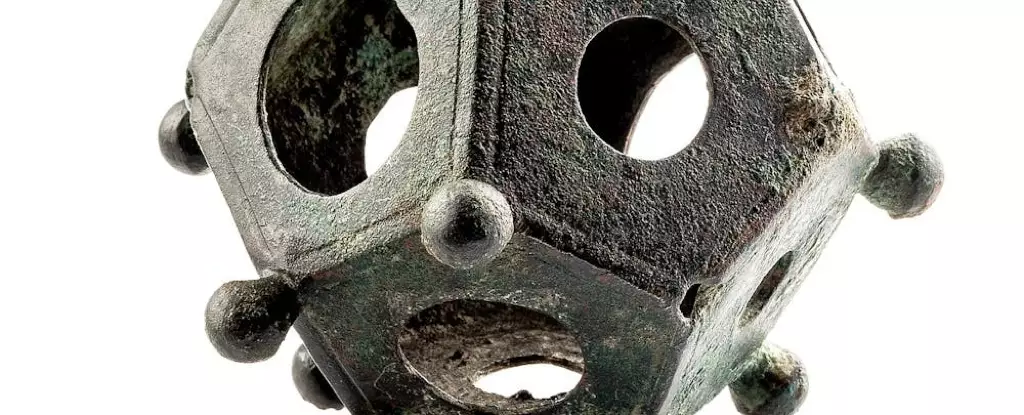Archaeologists have long been intrigued by the elaborately carved stone balls that have been found predominantly in Scotland. Dating from the later Neolithic period, these stone balls are a puzzling mystery that continues to baffle experts. Over 425 of these balls have been discovered, varying in size and material. Decorated with spirals or concentric shapes, these stone balls do not seem to have a clear purpose. Theories ranging from being used as missiles to measuring weights or decorative ornaments have been proposed, but the true function of these enigmatic objects remains unknown.
Dating back to the Roman period in Britain, dodecahedra are finely crafted objects made from copper alloy. Despite their distinct geometric shape, there are no known representations of these objects in ancient art or literature. With no clear indication of their purpose and varied sizes, archaeologists are still unsure about the intended use of these mysterious artifacts. The dodecahedra remain a fascinating puzzle that continues to intrigue researchers.
The Folkton Chalk Drums: Riddles in Stone
The discovery of carved cylinders of chalk known as the Folkton Chalk Drums in a child’s grave in north Yorkshire has perplexed archaeologists. With intricate geometric decorations and motifs resembling facial features, these drums raise questions about their significance. Despite their name, these drums do not show signs of being musical instruments and seem to have a deeper symbolic meaning. The connection between the Folkton Chalk Drums and the enigmatic Neolithic stone balls adds to the mystery surrounding these ancient artifacts.
During the late Bronze Age, small penannular rings made from gold sheet and wire were crafted as personal ornaments. These rings, often found in pairs, have intricate designs and are thought to have been used as nose rings, earrings, or hair ornaments. However, the discomfort associated with wearing these rings raises doubts about their intended purpose. The recent discoveries of similar facial jewelry in burials at Boncuklu Tarla shed light on the possible uses of these mysterious rings.
Cosmetic grinders made of copper alloy in two parts, the mortar, and the pestle, have been found in late Iron Age to early Roman period sites in Britain. Decorated with motifs of waterbirds and bovids, these objects were used for grinding substances, although the exact nature of these substances remains unclear. The association with fertility due to phallic symbolism on some sets adds to the enigmatic appeal of these objects. Amateur finders are encouraged to bring forward these cosmetic sets for further analysis, rather than attempting to clean them.
The mysteries surrounding these ancient objects serve as a reminder of the complexities of the past. Despite the best efforts of archaeologists and researchers, some artifacts continue to evade clear explanations. The allure of unraveling these enigmas drives the ongoing exploration of our shared history, sparking curiosity and fascination among professionals and the public alike. As new discoveries shed light on the past, the puzzle of ancient objects remains an intriguing challenge waiting to be solved.


Leave a Reply